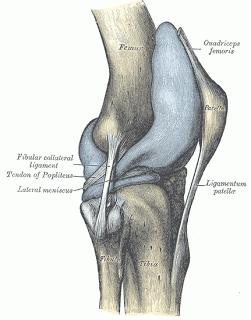 Q: I have had a TKR (total knee replacement) in March this year (5 months ago). I still have pain and swelling in the repaired knee, mainly on the outer side and behind the knee. Is there any yoga exercise recommended to stabilize the knee and make it healthy?
Q: I have had a TKR (total knee replacement) in March this year (5 months ago). I still have pain and swelling in the repaired knee, mainly on the outer side and behind the knee. Is there any yoga exercise recommended to stabilize the knee and make it healthy?A: I am sorry to read that your Total Knee Replacement (TKR) has not resolved all the issues you hoped it would have accomplished. Literature review states that 90% of all patients are pain free after six months, but sometimes the recovery period can take a full 12 months. Ten percent of TKR patients are not pain free within this time period.
Pain is a symptom of an underlying problem. The cause of the pain needs to be thoroughly addressed by the surgeon who performed your surgery. My advice would be to return to him and have him perform a complete exam, including diagnostic studies (X-ray, CT scan, blood work) to rule out any underlying infection and to ascertain the alignment of the knee prosthesis.
The other thing you might consider is a complete orthopedic examination by a physical therapist who is skilled with post-operative TKR rehabilitation, especially someone who can evaluate the biomechanical basis of your knee pain and look completely at your legs, hips, pelvis, back and how you move in space. A wonderful resource for you to check out is called Bridgebuilders to Awareness in Healthcare, a group of yogi rehabilitation professionals who blend traditional physical therapy and other rehabilitation disciplines with the practice and application of yoga in a therapeutic context to assist you in your journey back to wellness.
It is very common for the TKR to correct the arthritic cause of pain but if the patella is not tracking well and is not aligned within the patellar groove, then the imbalance when the quadriceps tendon contracts to straighten your knee will be extremely irritating. So if you are doing straight leg raises with or without weights, long arc quadriceps sets, or any other quadriceps strengthening exercises, the first thing you can do is stop anything that causes knee pain when the knee muscles are contracting. After you and your surgeon rule out any underlying pathology or prosthesis problems, you also may want to try to figure out how your current pain is different from your old pain. If you had knee issues similar to the ones you are having now then it is definitely important for you to see a rehabilitation professional.
If you are currently in a yoga class or have a home yoga practice, you really need to pay strict attention to the alignment of your hips, knees and feet as well as attention to how you move into and out of poses. You might want to stop all standing poses for now and instead work on passive inversions like Legs Up the Wall pose (Viparita Karani) or Chair Shoulderstand to see if you can mechanically drain some of the edema. If the edema and swelling is under the knee cap, you could ask your surgeon if he will aspirate the fluid, and if he agrees, it might not be a bad idea to ask him to culture it to make sure there is no infection lurking in the joint.
I am sorry that I can’t give you a specific "yoga exercise" for stability because I can’t see your body and how it moves. But if you are feeling that your knee is unstable, this is a sure sign that the leg is weak and it is unable to balance on itself. Please be patient and be a good detective. If your surgeon's assessments all come back negative, that is a good conclusion because you will know you can work on the specific issues at hand. With diligence and compassion for your knee, it will hopefully progress and allow you to resume the activities that are important for you.
—Shari

